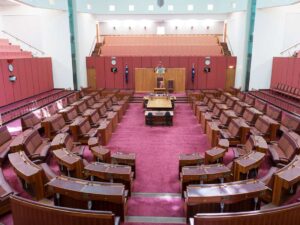Under the Draft International Education and Skills Strategic Framework, a cap on the number of international students education providers can enrol will come into effect on January 1 2025.
Any breaches of that number will result in hefty penalties, including banning any enrolments for a 12 month period.
The announcement has continued to draw criticism from many in the sector, who argue the new framework is a knee-jerk reaction to problems that require critical thinking and long-term solutions.
“I can’t see the cap approach [being] anything other than a relatively short-term stopgap measure,” said Abul Rizvi, former secretary of the department of immigration.
“The risk in terms of the ability of providers and the ability of students to plan their futures is really difficult in a capping environment. They don’t know what their caps are going to be and I suspect some of them will panic and will try to get applications in before January 1 2025,” he told The PIE.
I can’t see the cap approach [being] anything other than a relatively short-term stopgap measure
Abul Rizvi
The Independent Tertiary Education Council Australia chief executive Troy Williams said job losses across the sector were already occurring as a result of the new approach and expected to continue over the coming year.
“As a result of current visa processing arrangements, we’re seeing an alarming number of job losses with independent skills training and higher education providers that support international students.
“This is devastating for the individuals who have lost their jobs, and the loss of expertise across the sector isn’t great. Over the next six months, ITECA expects to see an upward trend in terms of job losses and high-quality providers closing their doors,” said Williams.
In April 2024, the number of international students reached a record high of over 700,000, which makes up 25% of the country’s 2.8 million temporary migrants.
Measures introduced by the Australian Government that encouraged overseas students to return after Covid-19 are largely to blame, including relaxing the number of working hours allowed on a student visa. It led to a much bigger influx of international students than expected and has led to concerns over education quality, and a debate about who is to blame for the housing crisis.
According to the minister for education Jason Clare, international students are “back but so are the shonks seeking to take advantage of them”.
“These reforms are designed to ensure the integrity, quality and ongoing sustainability of this vitally important sector,” said Clare.
Instead of relying on “the blunt tool of caps” to reduce migration levels and weed out poor quality providers, Rizvi advised taking an approach that relies on supply and demand.
“There has to be better ways that enable providers to compete with each other for students rather than the government telling the providers how many students they can have,” said Rizvi.
“You can’t run any industry based on telling each business how many customers you can have, what kind of customers you can have, and what the customers can do. That’s just bizarre.”
Australia’s reputation is also at risk, added WiIliams.
“No matter what spin the Australian government tries to put on their current policy settings, as a nation we risk long-term reputational damage and will no longer be seen as a study destination of choice,” he told The PIE.
“Although the new framework is still being developed, it’s looking very much as if the Australian government wants to tell an international student what they can study, where they can study and when.”
As a result, such a short-sighted approach means the sector will suffer, argued Williams.
“Some stakeholders predict that the number of international students wanting to study with quality skills training providers will fall by as much as 80%, and the number of higher education students will potentially fall by 25%.
“What’s required is an honest debate about Australia’s population strategy and a sustainable number of onshore international students within that strategy, something which successive Australian Governments have failed to act on,” he added.




